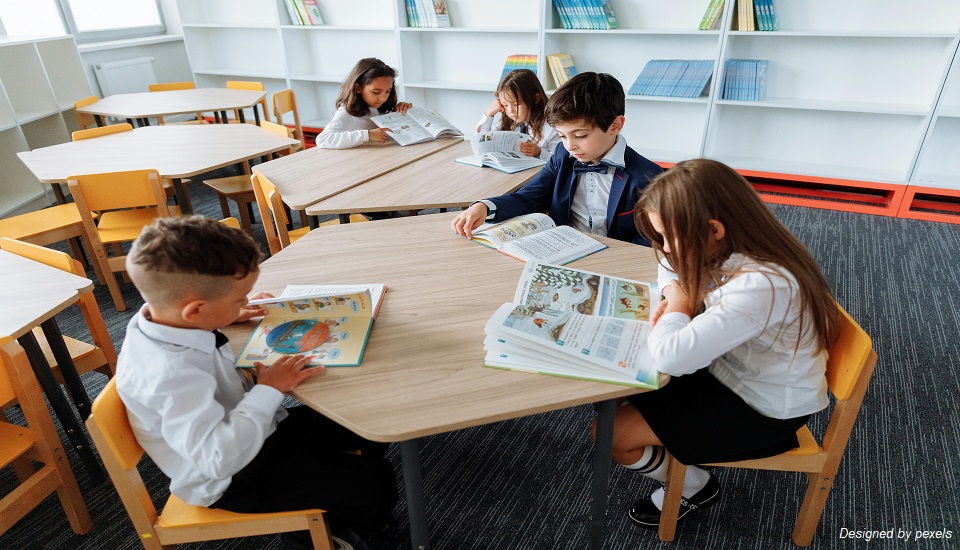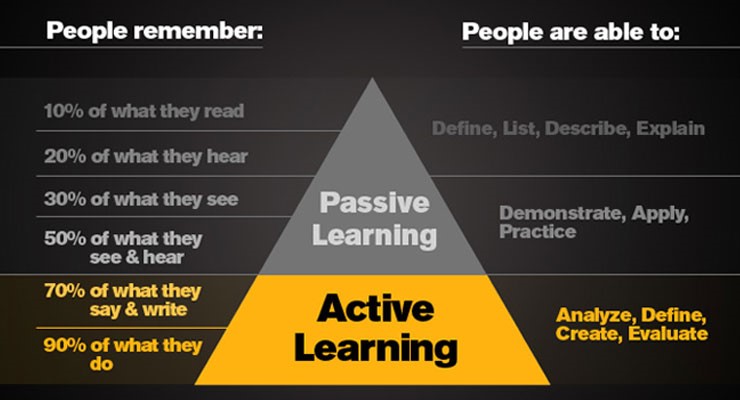
What Is Better For Student Success: Active Learning Or Passive Learning?
13th May 2024
Learning is simply one aspect of understanding a subject; learning methodology is also an important factor to take into account. We'll examine two distinct learning strategies in this post; they're commonly referred to as ‘passive’ and ‘active’ learning.
Today, every institution aspires to provide its students with the best possible education. But the procedure is not simple. Students occasionally forget what they have learned. Educators may find this dangerous as learners may make errors that might curb their learning. Read on to find out the critical difference between the two.
What Is Active Learning?
Through a variety of methods, including conversations, projects, and smaller tasks, active learning involves the student in the teaching process. It could also just entail putting a notion into practice or applying it to a real-world situation. By including students in the comprehension process, active learning fosters a conceptual knowledge of topics and concepts in them.
Powerpoints, lectures, and textbooks may all be used in active learning. But, it constantly forces the student to participate in activities (instead of merely listening or taking notes): practical experiments, group projects, peer conversations, debates, educational games, and fresh challenges.
Do you follow us on Social Media? We regularly share upgraded educational content, tips, feedback, and more. Check us out by clicking the profiles here – Facebook / Twitter / LinkedIn / Pinterest / Instagram / YouTube
What Is Passive Learning?
Many people have some familiarity with passive learning from school. Usually, it entails reading a book or listening to a lecture. It can entail studying on your own time independently, followed by comprehension assessments. The majority of communication is one-way, with the teacher and the student exchanging ideas most of the time.
It is expected of the student to absorb and process the provided material to turn it into knowledge. It is the individual learner's job to ensure that they are paying careful attention, ideally.
Difference Between Active And Passive Learning

Here are a few differences between active learning and passive learning to help you decide the best approach for your students:
- Communication Style
Active learning, frequently calls for conversation between students, groups, and the instructor. There are many other ways to communicate, such as debates, group projects, and in-person Q&A sessions. To boost student engagement, it is expected that they would participate in the class to the same extent as the teacher.
The basis of passive learning is one-way communication. The student makes an effort to retain the material by going through online courses, listening to lectures, or reading books. This technique, which is also known as self-learning, is mostly dependent on the commitment of the learner.
- Involvement
Students are encouraged to engage in the concept's learning through active learning. They could do experiments, pose questions, push other students, participate in class debates, etc. The learners engage directly with the concepts to get a deeper understanding of them, as opposed to passively absorbing the information that is offered to them.
Student involvement in passive learning necessitates independent engagement with the material. It is up to them to decide how interested or uninvolved they are. There is very little pupil involvement with these conventional study techniques.
- Orientation
The learner is at the center of active learning. To promote conversation and emphasize important topics, it makes use of the student's participation. The interaction between the student and the teacher/material is reciprocal.
The focus of passive education is on the instructor, who has total freedom to arrange their classroom as they see fit. They are allowed to disclose whatever information they see appropriate. It makes the teacher the center of attention and turns the students into spectators rather than active participants.
- Control Of Materials
With active learning, students have far greater influence over the process. They are inspired to look for information sources to discover fresh approaches, concepts, or opportunities. To expand on the conversation or to share thoughts, they might bring in their resources. Students get greater metacognitive abilities from this experience through active learning than they may through passive learning.
When a student learns passively, the teacher sets the course materials. It is anticipated that students will make use of the available resources to acquire the required knowledge. They only take the most crucial information from the text and commit it to memory without adding anything else.
- Evaluation Methods
Active learning may offer substantial advantages in terms of lifetime learning, and innovative ways to assess the learning, such as community showcases or real-world projects, can motivate students, impart life skills, and help them create more memorable experiences.
Standardized testing and multiple-choice tests are often used in passive learning evaluation. Test scores may deteriorate in the absence of the learner's successful independent study.
- Retention Rate
Long-term memory retention is higher for students who are actively engaged in assimilating new material, particularly when repetition is used as an active learning approach. The more practical, application-based understanding aids in helping them internalize the key ideas.
The benefits of passive learning can be seen right away after instruction. For this to occur, the student has to commit the material to memory and review it during an exam or other evaluation. However, over time, this knowledge is less likely to be retained. Passive learning necessitates memory over deeper understanding. Bloom's Taxonomy is a helpful framework to take into account; the further up the taxonomy you go, the more active learning is necessary.
- Role Of The Educator
The instructor or teacher plays more of a facilitator role in active learning. It is their responsibility to provide the ideal atmosphere so that kids may engage in activities and learn new things. Students now have a lot greater access to information than they did a few generations ago since we live in an information age. Giving pupils the tools they need to handle all of that knowledge is crucial.
The teacher serves as the main source of information on the subject in passive learning. The authoritative stance restricts the resources that pupils may utilize and the amount of information that is available for understanding.
Which Is Better?
It may be enjoyable for certain learners to passively absorb material and commit it to memory if they would rather study on their own without outside assistance. However, most people discover that actively developing understanding increases their chances of learning and remembering new information over the long run. A course in Master of Arts in Teaching can allow you to apply your skills and knowledge to figuring out what works best for your students.
We believe education should be accessible for everyone. That’s why we don’t charge for our blogs. Find the right course that will help you in your career with us, contact us at +6621056101. You can mail us at act@asiancollegeofteachers.com
Written By : Ruchi Mehta




